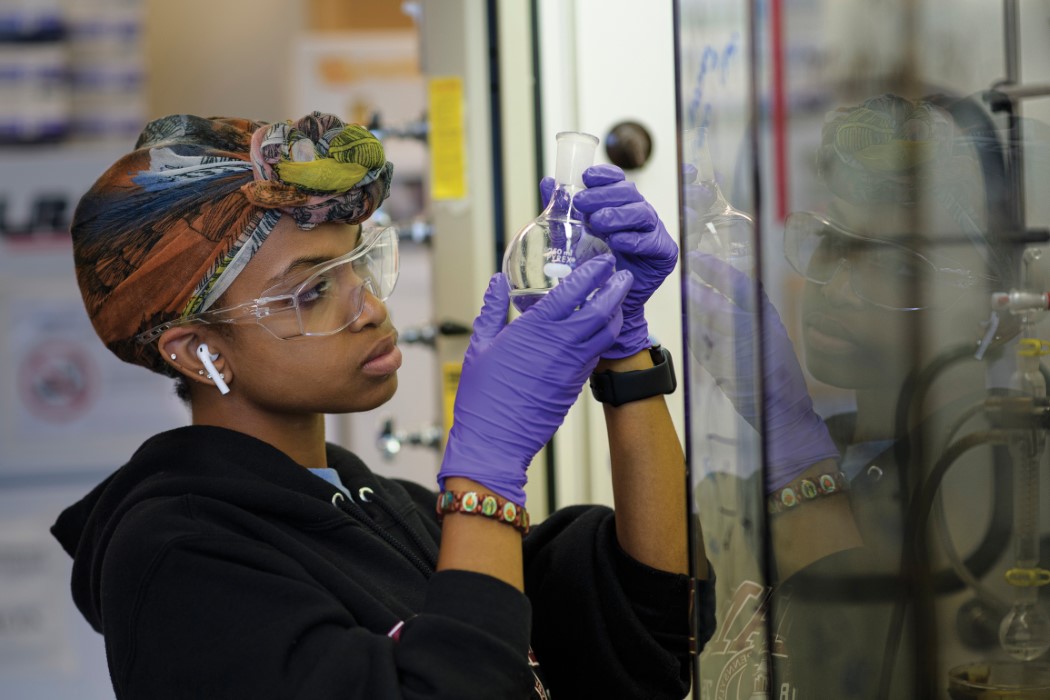Want to know how to find the best locations for advanced manufacturing in the Midwest? You could do the research yourself, or you could do what we did: Talk to Mark Warner, CEO of Liberation Labs.
A precision fermentation biomanufacturing company, Liberation Labs selected Richmond, Indiana, for a $115-million investment that will have capacity of 600,000 liters and initially create 45 full-time jobs once commercial production begins by the end of 2024. The firm broke ground on the 36-acre site on June 29. Warner says that is just the beginning.
“This is the single best site I have ever found in a search,” the CEO says. “We expect eventually to build about a 4-million-liter facility that will cost $350 million to $400 million.”
How Warner chose Richmond, located in Wayne County in east central Indiana on the Ohio border, is a case study not just in advanced manufacturing, but in precision site selection.
“We started in the Midwest because this area is competitive worldwide,” Warner says. “From the outset, we said that our first three plants would be located in the U.S., the Middle East and Australia. The three things that would drive our search would be costs, costs and costs.”
In Richmond’s 700-acre Midwest Industrial Park, Warner says he found all three and more. “We looked at 10 sites nationally, mostly in the Midwest,” he says. “We shortlisted the finalist locations down to four sites, all in the Midwest.”
The driving factors, he notes, were sugar, labor and power. “Look at our costs of doing business,” he says. “Seventy-five percent of our costs are for sugar, labor and power. Corn dextrose in the Midwest is very economical. We need engineers and technical people. And utilities are critical. These facilities use a fair amount of water and power.”
Each of these three areas eats up about 20% to 30% of operating costs, says Warner. “Richmond stood out because it checked all the boxes: the cost, supply and quality of power, sugar and labor. We also wanted expansion capability. We found in Richmond the water, power and wastewater treatment capacity to handle the full buildout including the eventual expansion.”
Transparency and Predictability Work
He adds that he was not concerned about locating the firm’s first factory in a town of 35,000 people. “We have been very clear with our intent with them,” says Warner. “They have been very transparent with us about a 35,000-person town. They have been very welcoming. The people at the Indiana Economic Development Corp. have been great to work with too. The thing I like about people in Indiana is that they understand that both ‘yes’ and ‘no’ are acceptable answers. The thing I keep coming back to is predictability.”
Incentives never drove the project, says Warner. What did make a difference, he notes, is that every incentive offered in Indiana was statutory. “That certainty of knowing what we qualified for was key.”
What Warner discovered in Wayne County is not a secret. Other manufacturers are joining him in Midwest Industrial Park on Interstate 70 in the middle of Indianapolis, Dayton and Cincinnati. On March 23, pet food processor Blue Buffalo announced a $200-million expansion in Richmond; and on June 13, pet food ingredients supplier Anchor Ingredients broke ground on a $40-million transload and processing plant in the park.
Valerie Shaffer, president of the Economic Development Corp. of Wayne County, says that effective marketing paid off. “Liberation Labs reached out to us after seeing the large billboard and the Blue Buffalo plant just off the Interstate,” Shaffer says. “Mark gave me a call and we discussed a 36-acre site in Midwest Industrial Park. We own the park and sell the land to end-users. Richmond Power & Light invested in a new substation there. We connected the company with all the utility providers, Norfolk Southern Railroad and the city for approvals. Then we connected them with IEDC for state incentives.”
IEDC offered Liberation Labs a $50,000 grant for job training and an EDGE (Economic Development for a Growing Economy) tax credit of $187,000. County incentives included selling the land at a discounted rate of $9,500 per acre and a cash grant of $250,000, as well as a tax abatement on real and personal property.
How Do You Rank Me Now?
What’s happening in Indiana is occurring at other locations throughout the six-state Upper Midwest region of Indiana, Iowa, Illinois, Michigan, Minnesota and Wisconsin — but advanced manufacturing is definitely more concentrated in some places than others.
According to a July 21 report by Zippia.com, the best states for manufacturing workers in the Midwest are Minnesota, ranked No. 2 nationally by Zippia, third-ranked Wisconsin, and ninth-ranked Iowa. Zippia ranks Illinois No. 14, Michigan No. 16 and Indiana No. 18.
In terms of technology jobs, CompTIA in its 2023 Cyberstates report ranks Illinois No. 7 nationally in net tech employment. In that same report, Michigan places 16th, Minnesota 18th, Wisconsin 20th, Indiana 24th and Iowa 29th.
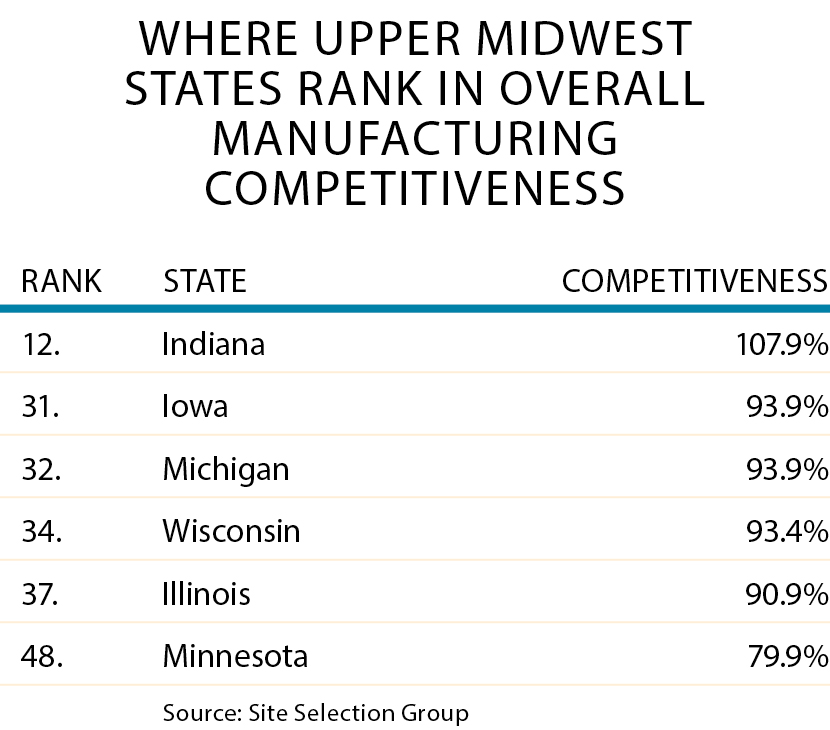
In its 2023 State Business Tax Climate Index, the Tax Foundation ranks Indiana as the best place in the Upper Midwest for overall tax policy. Indiana ranks No. 9 in the U.S. Michigan is ranked No. 12; Wisconsin No. 27; Illinois No. 36; Iowa No. 38: and Minnesota No. 45. In terms of property taxes, Indiana ranks second best in the country, per the Tax Foundation.
A more comprehensive ranking was conducted last September by the Site Selection Group out of Dallas. SSG uses a proprietary tool called GeoCision, which the firm describes as “a weighted model that can score and rank candidate geographies based on pertinent site selection variables.” The four categories of data studied were labor availability, labor cost, operating costs and conditions, and transportation and logistics.
Using multiple data points in each category, SSG ranked the lower 48 states in terms of their overall competitiveness for manufacturing investment. Here is where each state in the Upper Midwest placed, along with their score:
12. Indiana – 107.9%
31. Iowa – 93.9%
32. Michigan – 93.9%
34. Wisconsin – 93.4%
37. Illinois – 90.9%
48. Minnesota – 79.9%
For perspective, SSG ranked South Carolina No. 1 overall with a score of 120.0%, followed by North Carolina (118.3%) and Tennessee (116.9%). Every state in the top 10 was in the South.
‘Cradle of Astronauts’ Reaches for the Stars
Purdue President keeps innovation front & center on campus
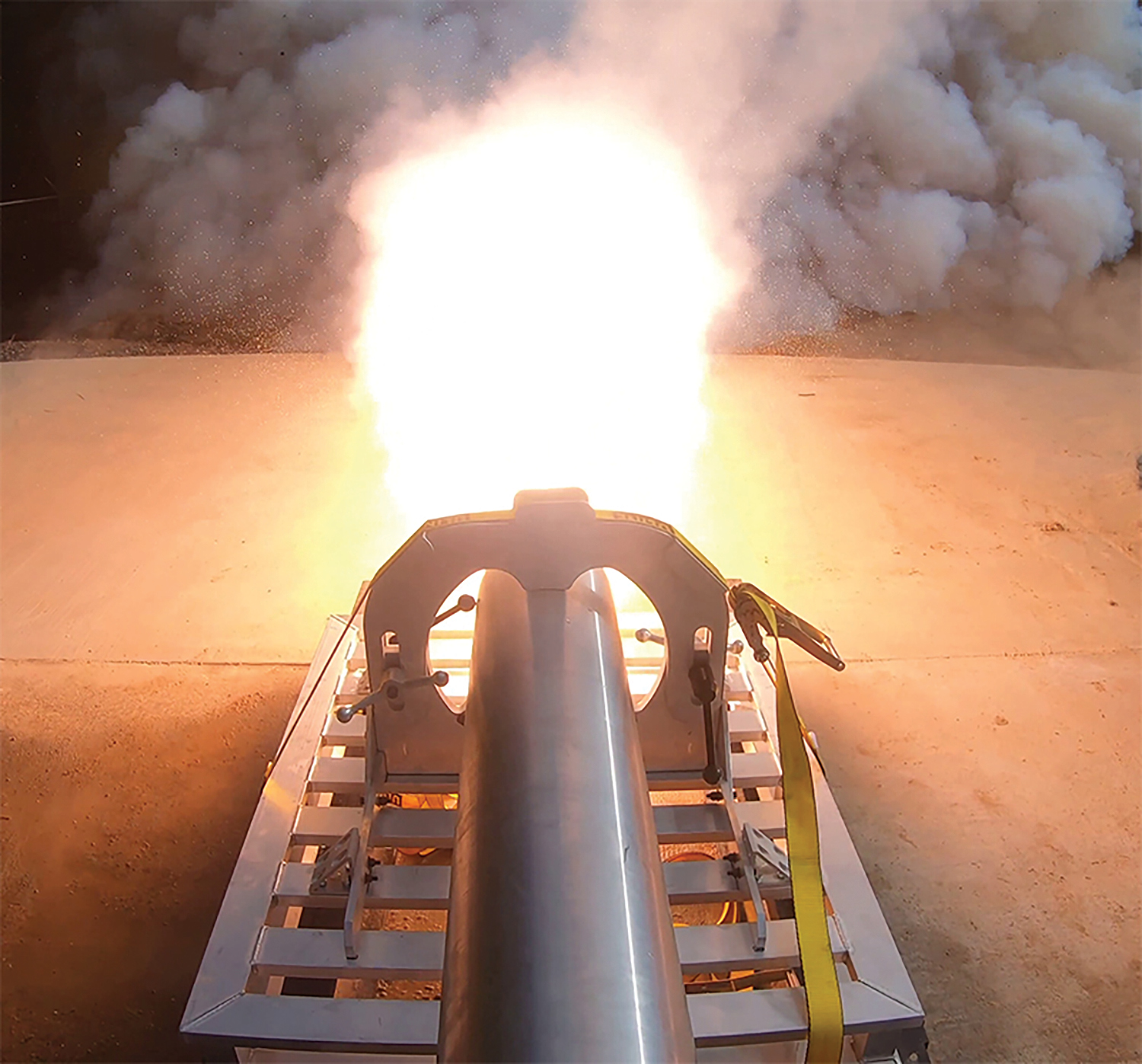
Purdue University President Dr. Mung Chiang developed a legendary reputation as an innovative entrepreneur long before taking the helm of this Big Ten school in West Lafayette, Indiana.
His credentials speak for themselves. He’s not just the chief executive at Purdue. He serves as Roscoe H. George Distinguished Professor of Electrical and Computer Engineering. He assumed the Office of President on January 1, 2023.
We recently caught up with the chief Boilermaker for an in-depth discussion on the role that Purdue plays in economic development, research, innovation and entrepreneurship.
What are some things that distinguish Purdue from other schools?
PRESIDENT CHIANG: We are proud to be a top 10 U.S. public university and proud to have our engineering graduate program ranked in the top four in America, right after MIT, Stanford and Berkeley. The tie to economic development is fundamental to our role as a public land grant university. In Indiana, we are working with the state government to build out America’s Hard Tech Corridor. This includes hard tech in semiconductors and microelectronics, digital agriculture and pharmaceutical manufacturing, and aerospace and transportation logistics. These are all technologies that you can touch. We grow things, make things and move things in Indiana. This is the Interstate 65 Hard Tech Corridor in a straight line.
In fact, we are unveiling the first comprehensive urban campus in our history next year right in the middle of this corridor between Indianapolis and West Lafayette. This is a collaboration of the government of Indiana, Governor Eric Holcomb, the Department of Commerce and the Lebanon Chamber of Commerce. It is called the LEAP Lebanon Innovation District LEAP. This unique public-private partnership is building out this 9,000-acre tech park. The first anchor tenant is Eli Lilly, one of the largest pharmaceutical companies in the world. This corridor will be generating workforce and jobs and innovation together in the areas of hard tech right here in America’s heartland. Purdue is excited to be building alongside the government and the private enterprises and the communities of America’s Hard Tech Corridor.
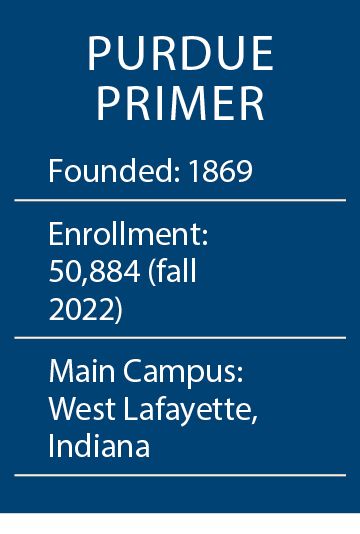 Innovation has been a hallmark of your professional career. Can you talk about the emphasis that you place on innovation at the university and secondly, what are some fields in which Purdue is a recognized leader?
Innovation has been a hallmark of your professional career. Can you talk about the emphasis that you place on innovation at the university and secondly, what are some fields in which Purdue is a recognized leader?
PRESIDENT CHIANG: The leadership part of that is long and deep, ranging from being America’s No. 1 semiconductor university to, of course, being the cradle of astronauts, including Neil Armstrong and many others. Purdue leads the country and the world in digital agriculture and food security. We lead in pharmaceutical manufacturing and drug discovery. We lead in speech pathology, and we lead in veterinary medicine. We lead in advanced manufacturing for a wide range of industries using AI and big data, as well as physical AI where the bytes and atoms meet.
Purdue leads in research and education. And that is just the tip of the iceberg. You asked about innovation, and that is so crucial to the Boilermaker spirit. It’s not only the fundamental breakthroughs of research and scaled excellence of education, but also translating these discoveries for societal benefits. For example, we were ranked No. 4 among all American universities in receiving patents last year by the U.S. Patent Office, right behind the entire University of California system as one, the University of Texas system as one and MIT. We’re ranked higher than Harvard and Stanford even though they have medical schools, which generate a lot of patents. We were recognized by Fast Company this year as the No. 16 Most Innovative Company or Nonprofit in the world. That’s higher than Disney and NASA. The Boilermaker innovation spirit runs very deep.
We’ve seen a lot of colleges and universities around the country place a heavy emphasis on entrepreneurship. What are you doing in this area at Purdue?
PRESIDENT CHIANG: As a former entrepreneur myself, I know just how important that is to the nation’s economy and to upward mobility in society and how hard it is to assemble the right team. Purdue has been improving in that area by leaps and bounds since my predecessor Mitch Daniels took over long before I did. The Wall Street Journal last year ranked Purdue among the top schools in the nation in entrepreneurship. We are in the top 10 in the country. We are a university that annually generates startups using university-owned intellectual property. I’ll give you two examples. One is a company called Adranos. They are a highly successful rocket company. That is Purdue technology and a Purdue startup located in Purdue’s Discovery Park district. Another one was launched by an undergrad named Joe Watkins. He and his two co-founders started a company before the pandemic called Socio and then they pivoted, as all companies would do, into a virtual meeting platform. They were acquired by Cisco two years ago, and now they are known as Cisco Webex Events. Today, they serve prestigious clients like Microsoft, Google and PepsiCo. Watkins earned a spot on Forbes’ 30 Under 30 list in 2020, and he was a keynote speaker at our summer 2023 commencement. They are also located in Indiana.
With our urban campus in Indianapolis, we are opening an entrepreneurial center alongside High Alpha, which is one of the most prominent successful venture and incubator organizations in the Midwest, started in part by Scott Dorsey. He sold Exact Target to Salesforce.com. Purdue is moving forward by including the urban setting and working alongside High Alpha and many other partners. On November 10 and 11, we will host the first Boilermaker Entrepreneur Homecoming. We expect hundreds of entrepreneurial-minded Boilermakers.
What would you like our readers to know about Indiana as a business location?
PRESIDENT CHIANG: I will give you three data points. One is that Indiana is consistently ranked as one of the most consistent, reliable, dependable and business-friendly environments. I just had a phone call with the governor yesterday talking about some of the deals we’re trying to close. When we attract companies like Saab and Rolls-Royce, we often hear that they observe that the state government, the local community and the university all work as one team and are very business friendly. Your success is our success. Your growth is our growth. That’s number one.
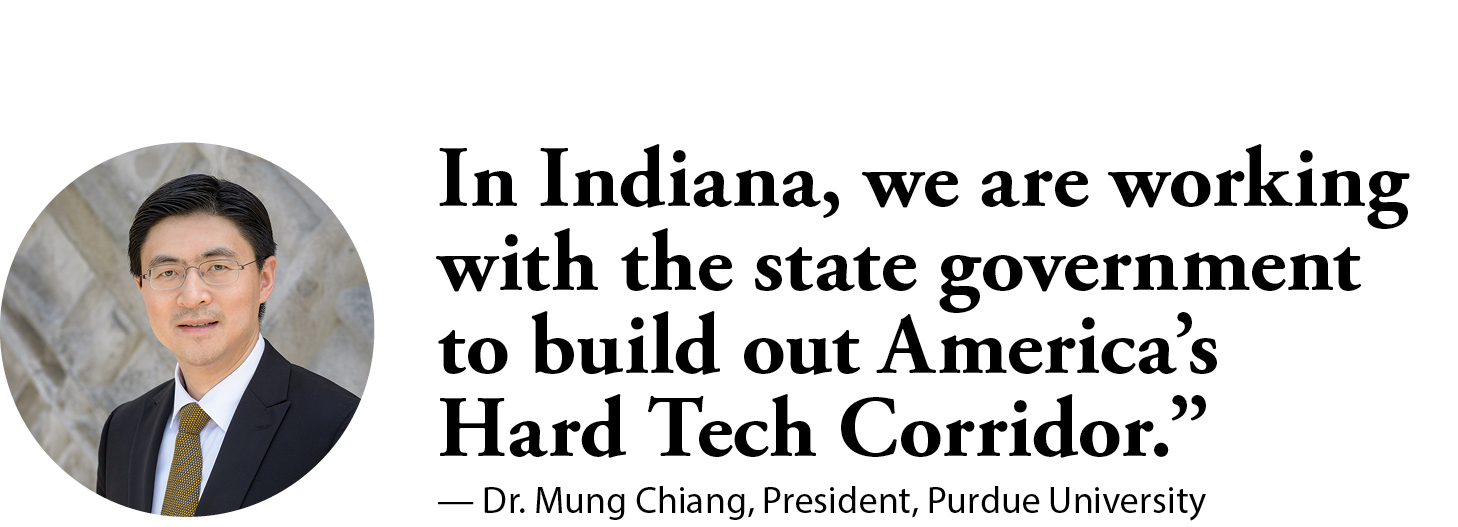
Number two is that per capita, Indiana has the largest concentration of workers in advanced manufacturing. And third is that we all understand that you need to keep reinventing yourselves and innovating yourselves in this age of the rapidly growing influence of AI and data in all kinds of industries. Purdue provides that foundation.
And, by the way, our employees don’t switch jobs every 12 months or whenever they get stock options. Indiana offers a dependable workforce. Here, you get all the infrastructure, water, tax policy, and everything else you need to run your business, and then you also get innovation.
Indiana is one of the best manufacturing states in the country. Just look at the tens of billions of dollars in deals that we have closed under Gov. Holcomb, some of which Purdue played a part in. When you look at the state, there is a reason why people voted with their feet. All those businesses had a choice, and they chose Indiana for new plant investments at a volume and pace that’s staggering. And none of them came here because we had a beach.
